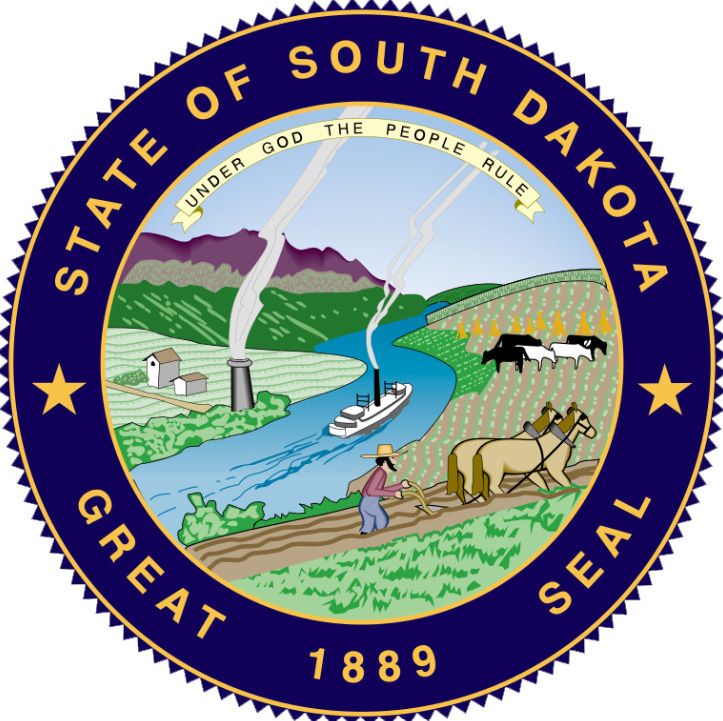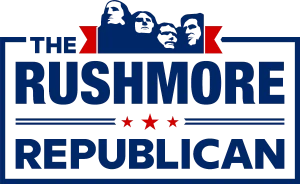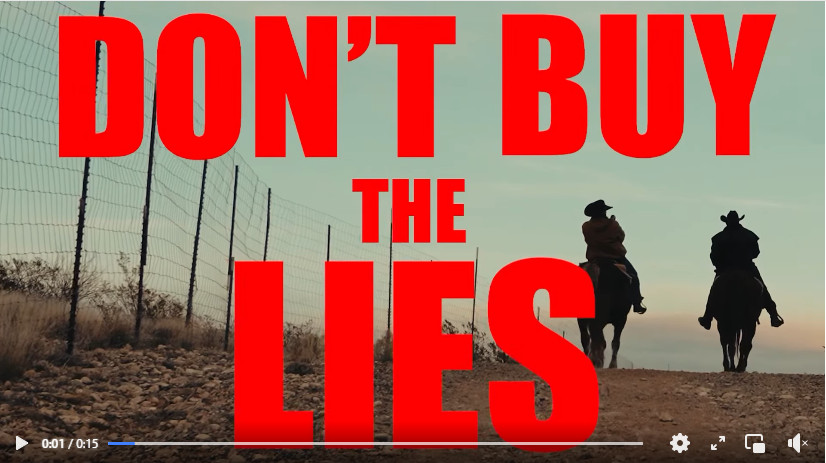
The happy election results in South Dakota (not to mention nationally) provide a good reason to take stock of the evolution of politics in recent years in this state. As political evolution never ceases, this article naturally alludes to a “mid-term report” because there will never be a final report as long as South Dakota exists. To the surprise of some and the chagrin of others, the concerted efforts of grassroots conservatives have played a direct role in the election outcomes delivered on 5 November.
Let us examine that premise in detail.
BACKGROUND
According to the US Census Bureau, South Dakota’s population was estimated at 919,318 people as of 1 July 2023 compared to 814,180 people in April 2010. With no state income tax and maximum guaranteed personal and economic freedoms, South Dakota is a magnet for blue-state Minnesotans, Iowans, Nebraskans, and Coloradans (and others). The state sends two US senators and a single US congressman to Washington, DC. Thank God for the Great Compromise, which ensured that small states would not become afterthoughts in national policy deliberations!
The state legislature meets for a single 40-working-day session in January through March and then adjourns for the year unless called to a special session by the governor. As an agricultural state, this is a legacy of the “old days” when many of the legislators were farmers and ranchers who could only afford time away to go to Pierre (the state capitol) during winter months.
There are 35 members of the state senate (one for each legislative district) and 70 members of the state house of representatives (two for each legislative district). On 5 November, South Dakotans elected 31 Republicans to the state senate and 63 Republicans to the state house – both super-majorities, as has been the case for well over a decade. Currently, all statewide officeholders, from the governor to the public utilities commissioners, are also Republicans.
In short, this is a Republican state insofar as the overwhelming majority of officeholders at the state and county levels are members of the Republican Party. However, as in many states, there are varying opinions on what “being a Republican” means. And in fact, a number of currently registered Republican officeholders were Democrats, once upon a time. It is often said these days that anyone seeking a career in South Dakota politics (or “public service,” as politicians are wont to say) must be a Republican to achieve any measure of long-term success. Some former Democrats retained their politics when they re-registered as Republicans, and thus there are “many flavors of Republicans” in the state.
As in all states, politics is heavily influenced by money from all sources: business and agriculture-related associations, political action committees set up by the political class (in-state or out-of-state funded), individual lobbyists for major corporations, large individual donors, and rank-and-file South Dakotans. The leadership in the state legislature and the governor’s office has evolved over the years in favor of those monied interests and has consequently lost touch with rank-and-file South Dakotans, in the opinions of many. Some of those frictions bubbled to the surface during the 2022 and 2024 election seasons.
THE 2022 LANDSCAPE
As a result of the increasingly questionable origins of the COVID-19 virus, the Democrat-led mandate for mRNA injections that absolved pharmaceutical companies of any liabilities through emergency use authorizations, and the unprecedented spike in consumer prices (inflation) due to massive federal spending pushed by the Biden administration and Democrats in the US Congress, South Dakotans have become increasingly interested – and personally involved – in political matters in the state.
In South Dakota, delegates to the GOP state convention elect Republican candidates for all statewide offices below the governor, including the lieutenant governor, attorney general, secretary of state, and others. Per the South Dakota Republican Party bylaws, each county sends a delegation to the convention that includes the county chairman, county vice chairman, county secretary, county treasurer, state committeeman and state committeewoman, not to exceed three at-large delegates elected in the primary election preceding the convention, and each precinct committeeman and precinct committeewoman (including those elected in the primary election preceding the convention).
Due to the aforementioned high interest in politics and the issues, a record number of delegates (687) attended the state convention, including a number of precinct people who were elected in the June 2022 primary election who had no prior political experience, let alone personal involvement in politics. These people generated much consternation among the South Dakota political class, as the sitting lieutenant governor (the hand-picked running mate of Governor Kristi Noem) only won a 56-44% victory, as noted here. In addition, a former state attorney general eked out a 52.7-47.3% victory over the former director of the South Dakota Dept of Criminal Investigations, and the biggest shocker was that a former employee of the Secretary of State’s office (backed by election integrity activists and many of the newly-elected precinct people) defeated the incumbent Secretary of State 61-39%.
The shock waves from that convention led to several subsequent legislative attempts to change the statutory rules by which several of the statewide candidates were elected – and were especially designed to thwart the direct involvement of precinct people in the election process. Each of the successive attempts to pass variations of this legislation was defeated during the 2023 and 2024 legislative sessions, to the consternation of several state-level political leaders (especially the senate pro tempore “kingmaker” and his allies in the state legislature) and to the applause of the state GOP chairman, other state legislators, and many county-level officials who fought hard to ensure that grassroots precinct people retained a primary motivation for their political engagement at the local level. To be crude, it got down to “keep the rubes out” versus “motivate participation by as many people as possible,” with the latter winning the day (so far).
Those differences exacerbated rifts in the state GOP and were about to get much worse during the 2024 election cycle thanks to a happy correlation of political forces.
2024 CHANGES STATE-LEVEL SOUTH DAKOTA POLITICS
That correlation of forces involved single issue politics, the emergence of a coalition of grassroots conservative counties, a galvanizing presidential election, and the qualification of several ballot initiatives for the general election ballot that were anathema to most Republicans in the state.
In a one-party state, the elections that count most are the primaries. In a number of South Dakota districts, winning the primary election means automatic election to the state legislature, as often there is no Democrat or other challenger who qualify for the general election.
Additionally, in recent primary election cycles, challengers well-funded by the political class and their donors were successful in defeating Republican incumbents who had frequently voted against legislation pushed by the leadership in the state senate, in particular. The general apathy among South Dakota voters that naturally exists during primary elections helped ensure those results.
That would change in 2024 due to a key issue that captivated attention, as well as a number of ballot initiatives and measures that were pushed onto the general election ballot by political outsiders. Throw in a widely watched and debated presidential campaign, recognized by many as the most important in their lifetimes, and the result was an unforeseen correlation of forces that would sweep grassroots conservatives in South Dakota to a series of seminal victories.
Perhaps the key issue that galvanized South Dakota voters (besides the presidential election) revolved around the passage by the state legislature in March 2024 (and the subsequent signing into law by the governor) of a bill that would facilitate the construction of a compressed CO2 pipeline network to collect and transmit this by-product of ethanol production to an underground reservoir in North Dakota. The bill removed county commissioners from the pipeline regulatory and approval process and essentially instantiated the precedent for a private company (in this case, a CO2 pipeline company – although the bill applied to any type of “pipeline transmission company”) to exercise eminent domain rights “in the public interest” over private landowners.
In a small state like South Dakota, almost everyone knows or is related to a farmer or rancher. For the past several years, South Dakotans watched with keen interest – and some with skin in the game – the coalescing of a property rights coalition of landowners aimed at thwarting the building of the proposed CO2 pipeline. Upon the governor’s signing of that bill back in March, the coalition immediately began collecting signatures that would lead to referring that bill to South Dakota voters in the November general election. In South Dakota, with sufficient authorized signatures collected, a bill passed and signed by the governor can be referred to the vote of the people for dispensation.
In what pipeline proponents would probably consider to be bad fortune, a number of highly controversial ballot initiatives and initiated measures were also being positioned for the general election ballot addressing these topics: implementing open primary elections (the top two winners in one primary regardless of political party would compete in the general election), instantiating unrestricted abortion rights in the state constitution, repeal of the state sales tax, and approval of recreational marijuana sales.
Interestingly, some of the same people who support the pipeline also supported (or were silent on – which implies tacit support of) some of the other ballot propositions and measures. The pipeline bill, the various petitions, and the subsequent publicity on all of these important topics kindled the attention of voters across the state and led to some shocking results in the Republican primary elections in June, as fourteen incumbents who supported the pipeline were defeated – in several instances by grassroots conservative newcomers.
While the state GOP was nominally opposed to the open primaries ballot initiative, the Party had no official position on the CO2 pipeline or a strategy for defeating the open primaries proposition and the ballot initiatives and measures that were counter to Republican Party values. As a result, twenty-five Republican Party county chairmen instigated a special meeting of the state GOP central committee under the state GOP bylaws to strategize and coalesce actions to defeat them. While the core participants in that August meeting were members of an ad hoc grassroots “coalition of counties,” other state central committee members also participated in a show of unity and concern about the various ballot propositions. This was the final element of the correlation of political forces that catalyzed the astounding (to some) election results on 5 November.
Note: these are goals of the grassroots county coalition:
- Encourage elected officials to be consistent in their words and deeds with the Republican Party Platform and principles of limited government
- Communicate concerns to legislators when potential legislation does not support the Party Platform or will needlessly expand governmental overreach
- Facilitate passage of legislation by the state legislature that represents the consensus of our respective county citizens, and which is consistent with the Party Platform
- Inform, educate, and engage our respective county citizens in the legislative process and key issues in order to actively involve them in South Dakota Republican Party politics
The straw polls taken at the special meeting were overwhelming in opposition to the pipeline and the various ballot initiatives. The subsequent campaigns to defeat these bore fruit, as all went down in the general election by an average of ~70% percent no votes. And Republican candidates (many of whom were aligned with the straw polls in that special meeting), including those newcomers elected in the primaries, swept to victory in November.
CONCLUDING THOUGHTS
While national attention was rightly focused on the overwhelming Trump victory and the Republicans taking control of the US senate, major grassroots victories happened in good old South Dakota, too, that surprised the political powers-that-be in the state. The icing on the general election cake for conservatives in South Dakota was the election of perhaps the most conservative leaders of the state senate and house of representatives in years (senate pro tempore, speaker of the house, majority leaders, and whips). This would not have happened without the defeat of those 14 incumbents in the June primary elections or without the direct involvement of members of the county coalition and allies in other counties across the state.
The political momentum has shifted decidedly in the direction of grassroots conservatives in South Dakota – a perfect example of what rank-and-file voters can accomplish if they pay attention to the issues, organize at the local level, network with others around the state, educate others on the issues, and execute at the ballot box. This is exactly the way a representative republic with fully engaged citizens is supposed to operate.
The next challenge is to elect members of the state GOP executive board, from the chairman to the regional directors, who are committed to accelerating this momentum and enlarging the consensus of the Republican Party in South Dakota. Rank-and-file Republicans need to remain engaged in the political process!
The end.



